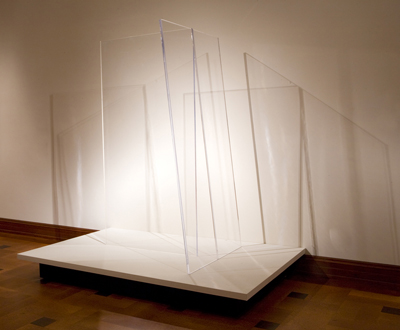



Minimalism (c. 1960s CE - 1970s CE)
Ordered by Telephone was named after the phone call artist Hans Breder placed at a manufacturing company who made it to his specifications. Breder had no physical contact with the material used in this sculpture; his voice was the only means of communication. In an interview, Breder said, "I wanted to remove myself from the process of making the work." Seeking to purge all flashy distractions common in Pop Art and emotional reactions conjured by Abstract Expressionism, Minimalists such as Breder designed straightforward, geometric forms manufactured from raw materials. These artists believed reducing forms to the bare minimum intensified the viewer's reaction.
These artists did not associate their artwork with a particular group or movement. In fact, this sculpture can also be considered Conceptual Art, a style that focused on the artist's ideas rather than his or her physical contact with the materials. The incorporation of a single light source in Hans Breder's Ordered by Telephone casts shadows that become as important as the Plexiglas™. According to Breder,"The question here is not what [the sculpture] is but where it is. The observer finds him or herself of that in-between space of awareness."
Ordered by Telephone, 1969
Hans Breder, American (born 1935)
Plexiglas™
2 panels each measuring 84 inches H; 42 inched W; 1 inch D
Gift of the artist
2004.001.000a-b
World Events
1968 Martin Luther King, Jr., is assassinated in Memphis, TN.
1969 Neil Armstrong walks on the moon.
1974 President Richard Nixon resigns from office.
1989 Berlin Wall is destroyed.
1997 The first adult mammal (Dolly the sheep) is cloned in Scotland.
 DARCY DISCUSSES: INSPIRATION
Anthropologist Victor Turner's writing concerning the concept of liminality greatly influenced Hans Breder's art. According to Turner, liminality is the strange place between cultures, languages, and ideas.
DARCY DISCUSSES: INSPIRATION
Anthropologist Victor Turner's writing concerning the concept of liminality greatly influenced Hans Breder's art. According to Turner, liminality is the strange place between cultures, languages, and ideas.

Explore Ball State University Museum of Art online






